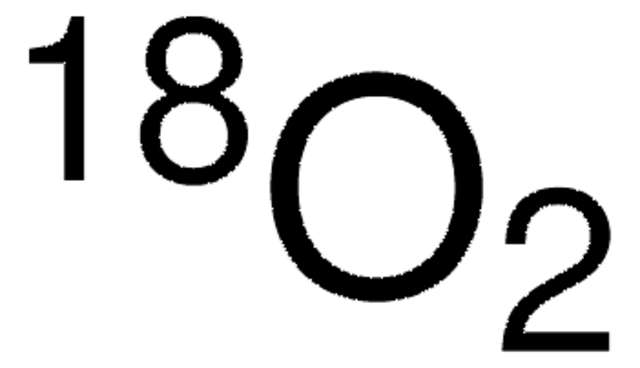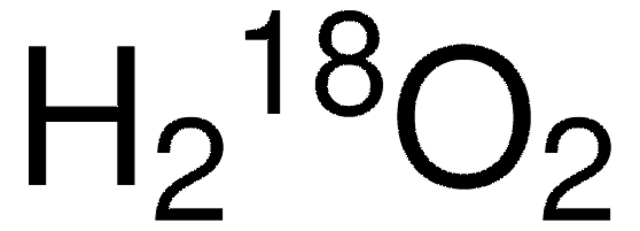487090
Water-18O
99 atom % 18O
Synonym(s):
18O Labeled water
Sign Into View Organizational & Contract Pricing
All Photos(1)
About This Item
Linear Formula:
H218O
CAS Number:
Molecular Weight:
20.02
MDL number:
UNSPSC Code:
12142200
PubChem Substance ID:
NACRES:
NA.12
Recommended Products
description
Normalized with respect to hydrogen
Quality Level
isotopic purity
99 atom % 18O
form
liquid
bp
100 °C (lit.)
mp
0 °C (lit.)
density
1.11 g/mL at 20 °C (lit.)
mass shift
M+2
storage temp.
room temp
SMILES string
[18OH2]
InChI
1S/H2O/h1H2/i1+2
InChI key
XLYOFNOQVPJJNP-NJFSPNSNSA-N
Looking for similar products? Visit Product Comparison Guide
Related Categories
General description
H2180 is isotopically modified compound consisting of two hydrogen atoms covalently bonded to oxygen-18. It is most convenient to store, transport and use Oxygen-18 in the form of water enriched with this isotope.
Application
O-18 enriched water is used in Positron-Emission Tomography (PET), a nuclear imaging technique that is used to observe metabolic processes in the body as an aid to the diagnosis of disease such as tumors, staging of cancer, metastasis, dementia, etc. H2180 is currently the only potential universal bacterial substrate suitable for stable isotope probing (SIP). It has been used in the quantification of population-specific growth dynamics in benthic bacterial communities in response to changing redox conditions.
Storage Class Code
10 - Combustible liquids
WGK
WGK 3
Flash Point(F)
Not applicable
Flash Point(C)
Not applicable
Personal Protective Equipment
dust mask type N95 (US), Eyeshields, Gloves
Regulatory Information
新产品
Choose from one of the most recent versions:
Already Own This Product?
Find documentation for the products that you have recently purchased in the Document Library.
H H Coenen et al.
Nuclear medicine and biology, 37(7), 727-740 (2010-09-28)
Positron emission tomography (PET) is a rapidly expanding clinical modality worldwide thanks to the availability of compact medical cyclotrons and automated chemistry for the production of radiopharmaceuticals. There is an armamentarium of fluorine-18 ((18)F) tracers that can be used for
Elizabeth A Rettedal et al.
MicrobiologyOpen, 4(2), 208-219 (2015-02-05)
Current limitations in culture-based methods have lead to a reliance on culture-independent approaches, based principally on the comparative analysis of primary semantides such as ribosomal gene sequences. DNA can be remarkably stable in some environments, so its presence does not
Ömer K Coskun et al.
The ISME journal, 13(6), 1546-1559 (2019-02-21)
The benthos in estuarine environments often experiences periods of regularly occurring hypoxic and anoxic conditions, dramatically impacting biogeochemical cycles. How oxygen depletion affects the growth of specific uncultivated microbial populations within these diverse benthic communities, however, remains poorly understood. Here
Our team of scientists has experience in all areas of research including Life Science, Material Science, Chemical Synthesis, Chromatography, Analytical and many others.
Contact Technical Service



